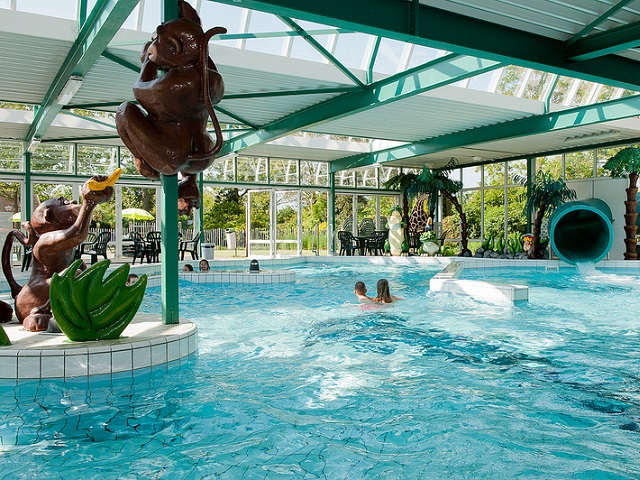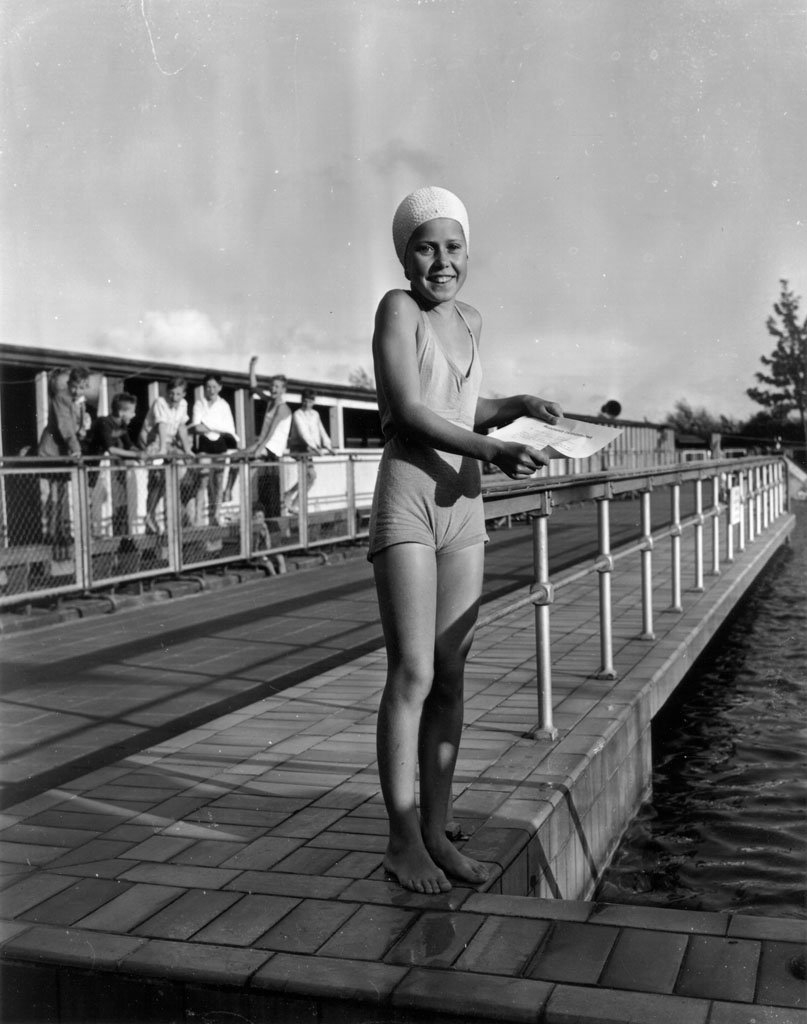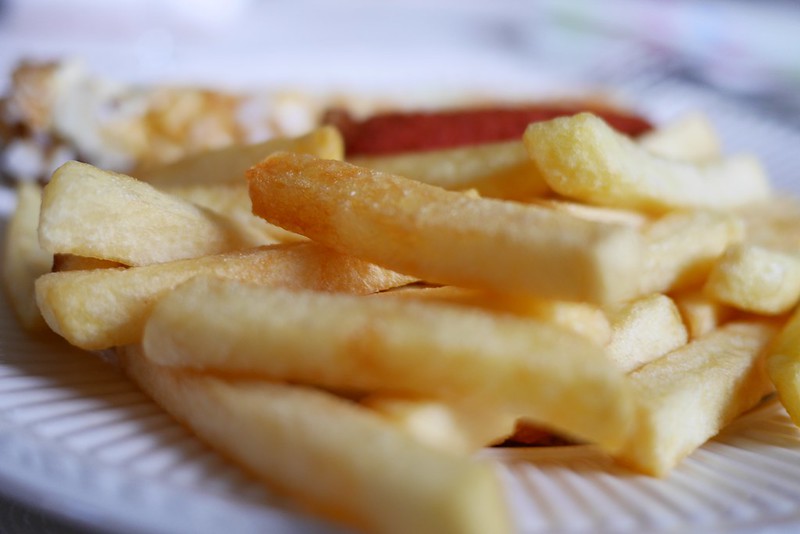What’s a Dutch Zwembad? Posted by Sten on Jun 22, 2020 in Culture, Dutch Language, Dutch Vocabulary
Ever since I moved away from the Netherlands, there have been things I’ve missed from my home country. Not only foods, like stroopwafels and good patat, but also places to go and see. This morning, I really felt like going to a zwembad (public pool, also refers to just a “pool”). Unlike in the United States, when the Dutch refer to a zwembad, we usually don’t mean the odd-shaped hole filled with water in your backyard, but an actual business that usually has multiple pools to accommodate all kinds of zwemmers (swimmers). They’re a pretty big deal in the Netherlands, let’s take a small dive into Dutch zwembaden!
Binnenbad, buitenbad, recreatiebad, kinderbad
A zwembad usually has multiple baden (pools). Most have a binnenbad (inside pool) that is warmer than a regular pool for swimming baantjes (laps), is odd-shaped with more decoration, a bubbelbad (whirlpool), stromingen (streams) and maybe even a glijbaan (slide). I greatly enjoyed this recreatiebad (recreation pool) as a kid!
These days, I am more interested in the wedstrijdbad (competition pool). Like its name suggests, this is where people test their skill against competitors in tournaments. However, when no training or tournament is going on, these are open for the public too, om baantjes te trekken (do laps). That’s what I define as fun these days! How the times have changed… These wedstrijdbaden are usually colder and deeper than the recreatiebad. Since they are deeper, this is also where you would find springplanken (diving boards).
Then, sometimes, a zwembad also has a buitenbad (outdoor pool). These can be specced with another glijbaan and springplanken. Often times, there is also a ligweide (“laying meadow”, a sunbathing area) where you can enjoy the few amazing days of sunshine in the Netherlands!
In general, it is not required to wear a badmuts (bathing cap). Though some zwembaden might require it.
Zwemdiploma’s
Zwembaden are places of societal significance. It’s where the Dutch get their zwemlessen (swimming lessons) and zwemdiploma (swimming certificate) and usually learn how to swim. The zwem-ABC, the name of all three zwemdiploma’s together, is a nationally recognized certificate given to children once they pass the swimming tests. These are focused on learning how to swim and zwemveiligheid (swim safety). After all, a country with so much water needs people that know what to do if they accidentally fall into it! The zwemdiploma’s are a pretty fascinating process, which warrant their own post, actually. But zwembaden are where you get yours!
Patat!
Zwemmen is fun and all, but the best thing after zwemmen is, of course, patat! Some fatty potato sticks mixed with a bit of zwembadwatersmaak (pool water taste)… Believe it or not, it gives me some nostalgic vibes.
And the nice thing is that many zwembaden have a snackbar (snack bar) with all kinds of foods, including patat and other typical things you can get there. So if you get hungry of all the swimming… Don’t worry, the zwembad has got you covered!
And after your fun swimming experience, jump under the douche (shower), change in the kleedkamers (changing rooms) and look back on a great day in a Dutch zwembad!
Have you been to a Dutch zwembad before? How was the experience for you? Let me know in the comments below!

Build vocabulary, practice pronunciation, and more with Transparent Language Online. Available anytime, anywhere, on any device.







Comments:
Irene leeuwenkamp:
I miss so much about Holland dubel zout dropjes hagglslag, patat fritz, I was born and live in the UK but my father was from den haag we visited Oma and opa every summer I feel more at home in holland, the people are amazing but very to the point, and i got the tall gene too 5′ 10″ can never find a tall enough man in the uk
Peter Simon:
Hi, I’ve never lived in the States but still I don’t understand why you’re raving about Dutch swimming pools. I’d like to go swimming here but it has always seemed a very difficult task: I can only go for an hour or one and a half hours, and at times they limited to midday or late in the evening (after 20:00 or even 21:00 sometimes – who likes doing sport right before going to bed??) and no free swimming in the weekend. The outside pool doesn’t exist at my place. I’m from Hungary, where people can go from morning till late in the evening any time and as long as they wish, they can use outside spaces and pools as well and for no more than what we have to pay here for the limited access. Swimming possibilities are one of the worst aspects of living in the Nethelands. Only consolation is the possibility of swimming (in hot sommers) in the Rhein.
Sten:
@Peter Simon Well, I suppose it’s just the nostalgia for me then 🙂
They aren’t perfect, that’s for sure, and it’s hard to compete with Hungary and its amazing pools!
Gre:
My first encounter with a stromingen was in a Dutch zwembad. My girls and I were visiting my mom’s home country. We were thrilled by many things, but the stromingen in the pool was up at the top of the list. Streams of water are now a common occurrence in many pools, but we will always remember our first experience as a real Dutch treat.